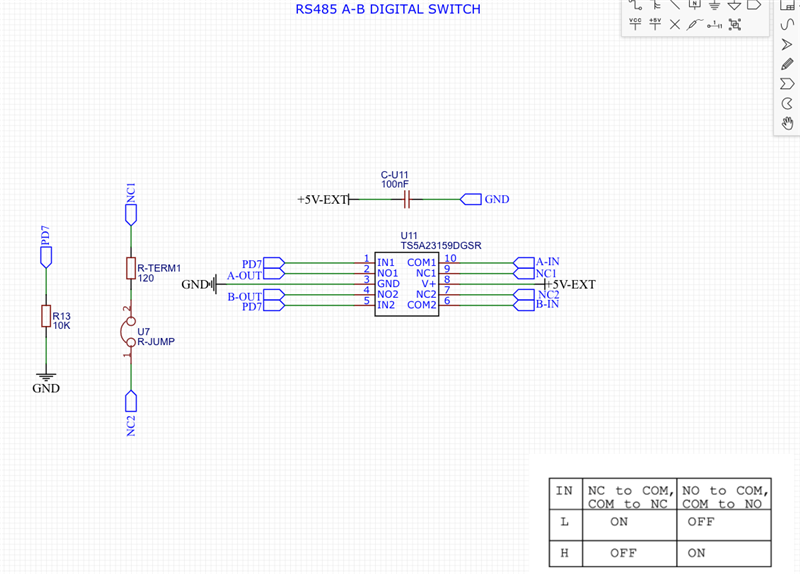Other Parts Discussed in Thread: ISO15
Hi, for a project i'm planning to use the TS5A23159 in order to enable/disable RS485 devices lines, because i have many contact sensors that are placed around production environment, they monitor the door open/close status and using RS485 trancievers the slaves (that are equipped with an ATMEGA328P) will expose those information to the master of the bus.
Now, i want to be free to position those devices in my customer environment without worrying to set a slave address hardcoded in my firmware or using hardware dip-switches: the address will be dynamically managed from the MCU.
They are connected using a CAT5e cable and the total length is around 20/40 meters, the cable will transport: A-B-VCC-GND.
Every device is wired in daisy chain mode and the preceding device will control the RS485 data lines enable of the following device, using a TS5A23159 by the MCU (as reported in the image below) i want to implement this sort of "RS485 Digital Switch":
This approach will work? of will cause RS485 issues? keep in mind that the baudrate used is pretty low: around 38400, and that the trancievers on the slaves are all TI ISO15.


